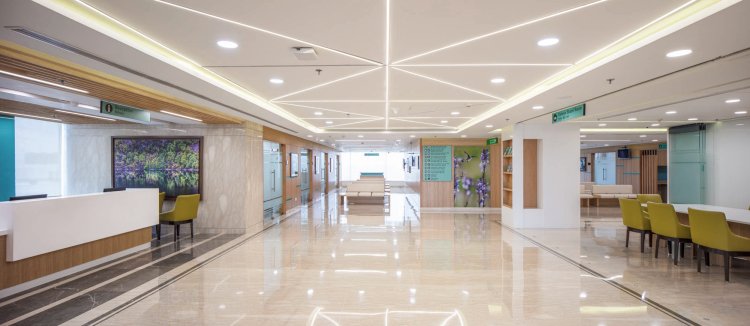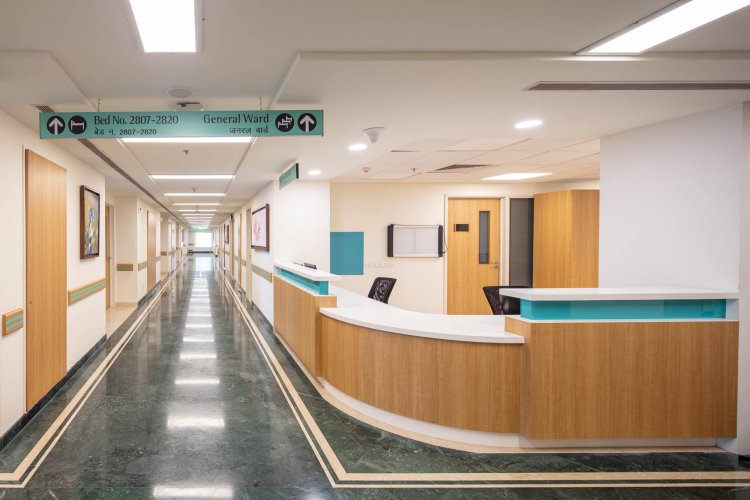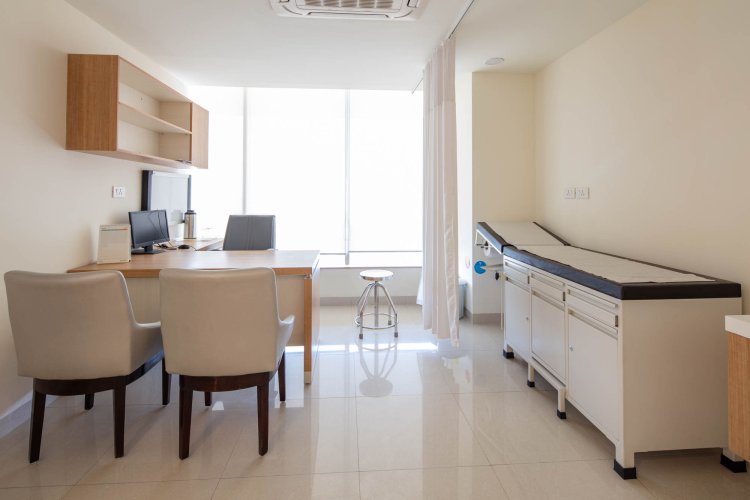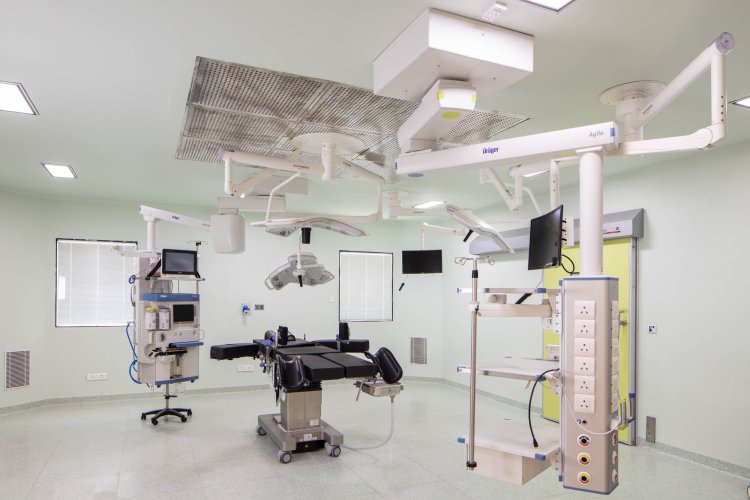Max Super Speciality Hospital, Uttar Pradesh by CDA
Personalising Health Care with Design using an “Evidence-Based” Design Approach

The new addition to Max Healthcare’s lineup for Super Speciality hospitals renders a seamless functional extension of the existing block, along with a highly responsive healing environment. Located in Vaishali in Uttar Pradesh, within a very competitive healthcare hub of East Delhi, the project brief made it critical for the designers to push the boundaries of patient care and satisfaction through design. The new hospital aims to emerge as a beacon of contemporary healthcare in India, where planning and interior design rely heavily on principles of ‘Evidence-Based Design’ that have resulted in robust outcomes that are responsive and responsible. This principle enables convenience and approachability for patients with a core sense of comfort.
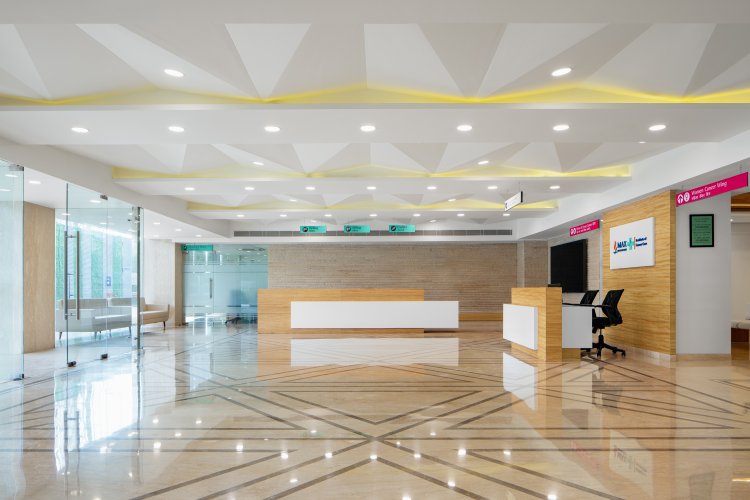
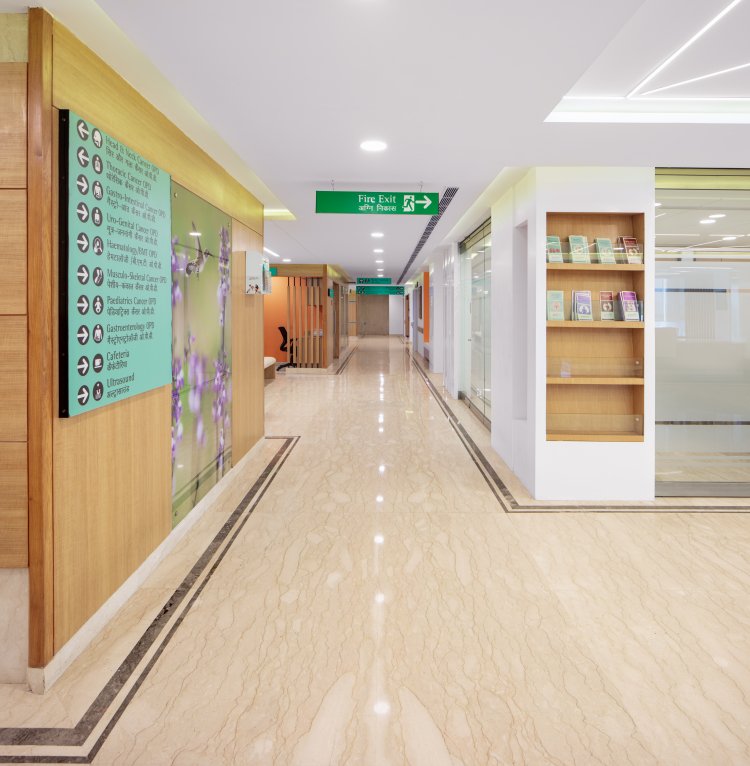
The two-and-a-half-acre tight-fitting rectangular site foresaw the construction of its first block, back in 2008, with about 200 beds and one basement pedestal for future expansion. The basement housed two structural shells for its LINACs and some support services spilled out of its initial block. Even though the masterplan provided the extents for the new extension's envelope, it also posed several design challenges, such as insufficient parking space on-site to augment the anticipated built-up area. The existence of only one basement level dissolved any possibility of taking the parking garage below grade. This led to the possibility of a mixed-use tower with parking floors at the bottom, followed by hospital floors above. This approach made it possible for the client to utilize the maximum possible FSI and add over 150 beds in about 145,000 Square feet of built-up area.


The new building’s footprint aligns 40 feet north from the existing block, making its south façade almost entirely deprived of natural light due to its shading. The lack of natural light penetration creates room for the zoning out of the southern façade for circulation cores, leaving the entire east, west, and north façades open for daylight penetration. On the planning front, the ground level houses the entrance lobby with an examination pod and support services, followed by five floors of a parking garage. However, the actual hospital begins from level six, entirely consisting of out-patient pods, followed by two floors of in-patient rooms. The top floors house the critical care units and operation theatres, while providing for a more flexible headroom to augment its Air Handling Units and Hepa-Filters. Another attractive characteristic of this hospital is the seamless connectivity of each level with the existing hospital. The connections are established through ramped bridge connections, allowing the two isolated blocks to function as a coherent healthcare facility.
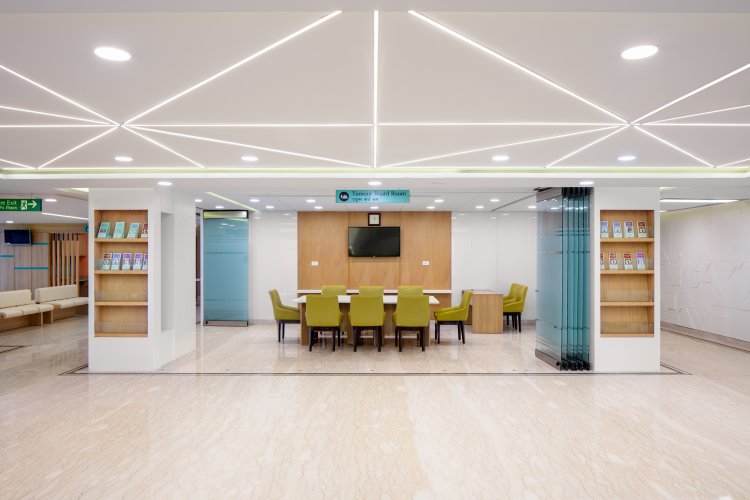
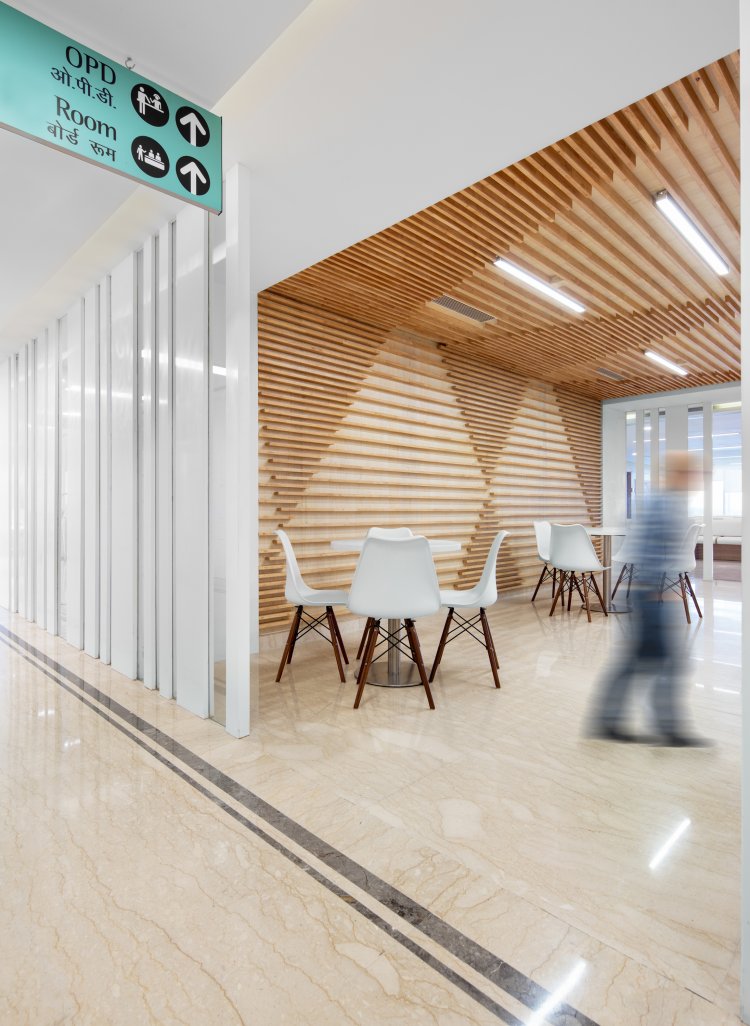
Max Vaishali also employs ‘Evidence-Based Design,’ which uses validated design moves to achieve better outcomes for a variety of healthcare design aspects. A notable instance of this principle is the incorporation of identical ‘examination pods’ in the ambulatory floor. Standardized pods, each containing five exam rooms, one consultation room, and some support services, have been replicated to promote simpler way-finding for the patients and streamlined staff operations as a by-product of the standardized location of all utility areas.


The façade design attempts to exhibit the transparency of the building volume. The parking floors are clad with white cardiographic louvers, followed by a unitized curtain wall for the ambulatory floors and large punched windows for the in-patient floors above. Based on the research of colour palettes in an Evidence-Based Design approach, the palette is primarily earthy and includes whites, beiges, and browns to stimulate healing. With great natural light penetration, every departmental zone and all the waiting areas are adorned with large paintings in vibrant colors and textures to uplift the spatial and visual ambiance of the facility, ultimately enhancing the patient and visitor experience as much as possible.
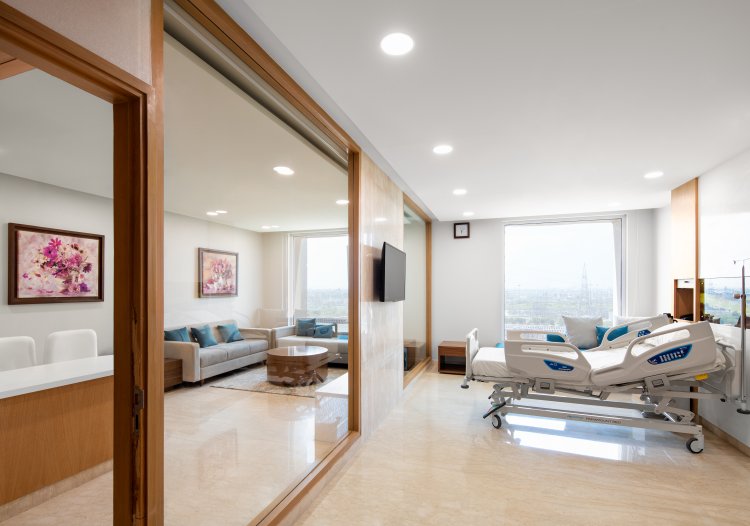

The design of the Max hospital at Vaishali is addressed with a strong design philosophy that aims to innovate the approach to healthcare design facilities. Through the application of Evidence-Based Design principles, the hospital is composed of volumes that are designed with empathy, making healing spaces livelier and responsive.

